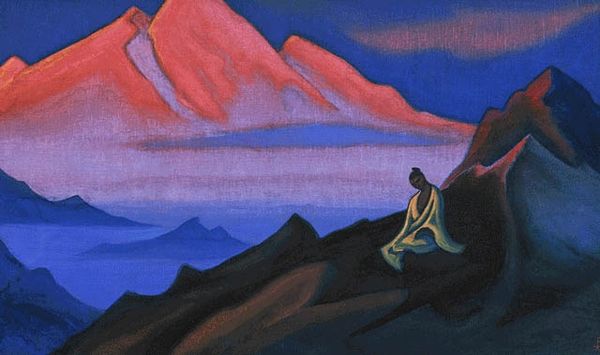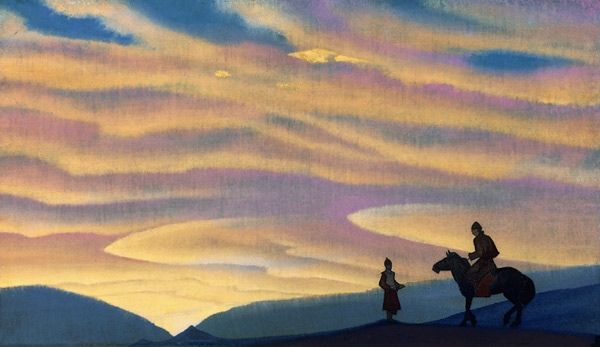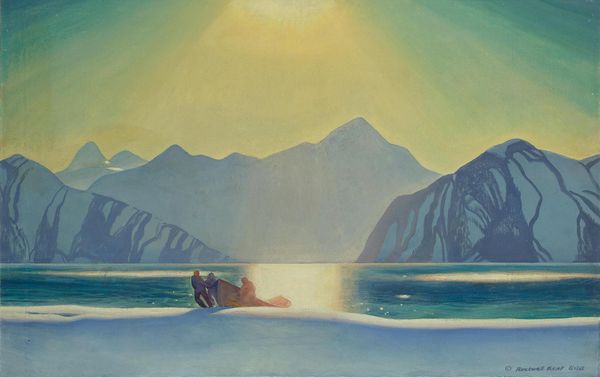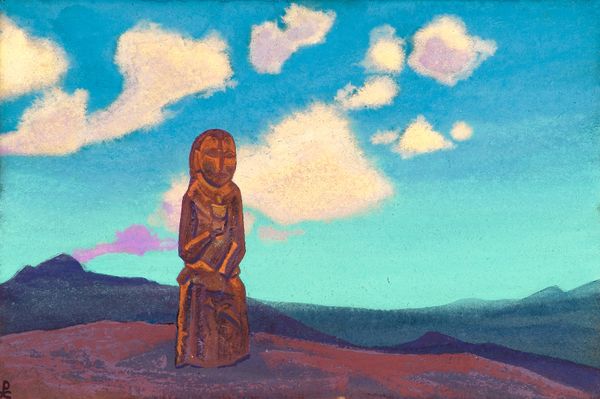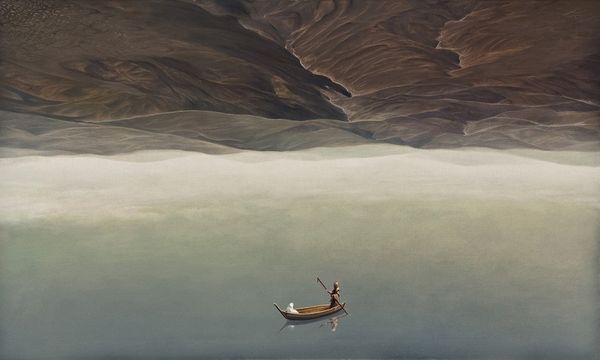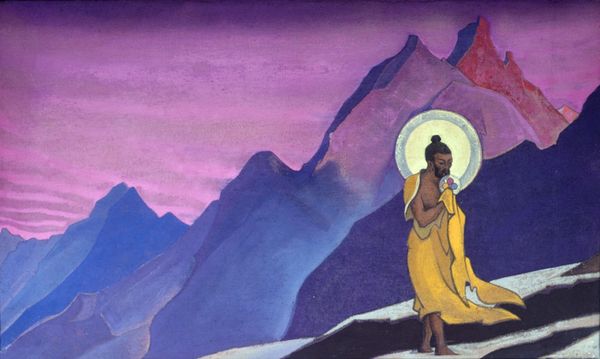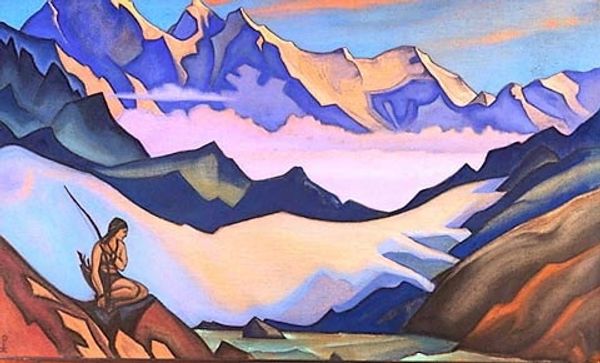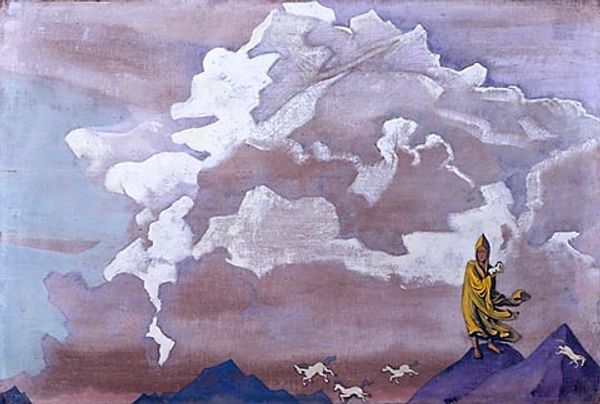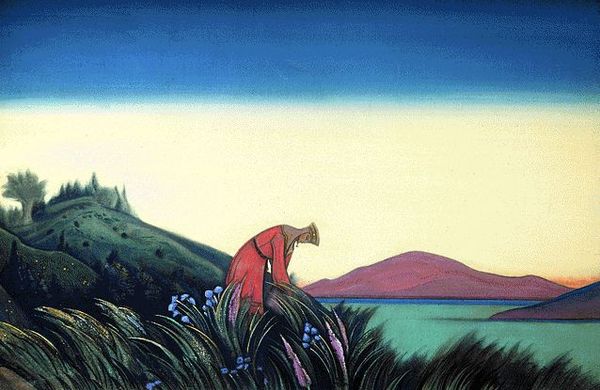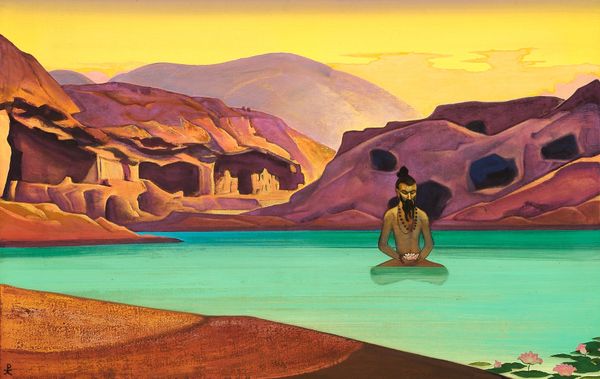
Dimensions: 61 x 123 cm
Copyright: Public domain
Curator: Before us is Nicholas Roerich's "Boris and Gleb," painted in 1942, rendered with gouache. What are your immediate thoughts? Editor: A profound sense of peace. There is almost a fairy-tale quality to the boat gently sailing between a mystical sun-soaked aura and a blue, mountainous, yet serene horizon. It's like a gateway, really. Curator: Note the use of gouache here. This water-based paint allows for those flat, opaque blocks of color. Look how Roerich manipulates it, building up layers to create that distinctive luminous effect in the background. Gouache as a medium itself lends itself to accessibility and portability. Was Roerich deliberately eschewing oil paints to democratize the sacred image? Editor: The accessibility is an interesting point, as Roerich lived through immense social upheaval in Russia. I would say, placing it in its historical context, this echoes the symbolic significance of Boris and Gleb, two princes who chose to embrace death rather than engage in fratricide for power. They are symbols of unity and reconciliation. Roerich is evoking those ideals in a time of global conflict. Curator: A material reading brings me back to the gold halos around the figures. In Byzantine art, gold signified divine light. Was Roerich alluding to traditional religious iconography, even though his practice moved far from strict religious doctrine? The very pigment must have held particular spiritual meaning to him. Editor: Exactly. And Roerich was deeply invested in the spiritual potential of art to transcend cultural boundaries. Consider his engagement with Eastern philosophies; Boris and Gleb becomes less about strict Christian doctrine, and more about a universal quest for harmony and non-violence. Also, thinking of class; what might it have been like to *see* these holy, powerful brothers who turned away from power, specifically? It’s interesting that Roerich chose them as subjects amidst global conflict. Curator: He had direct experience with that, in the upheaval of World War I. That's an angle. Roerich founded artistic movements—he built entire cosmologies out of artistic collaboration. How does an artwork like this reflect on the act of making, rather than just the finished object? Editor: The layering, the deliberate blending of artistic styles and faiths… it speaks to a continuous process of negotiation, isn’t it? He’s pulling together fragments of shared humanity and saying: "Here, build a different kind of future from this." Curator: A future that prioritizes spiritual integrity over material gain. Perhaps he chose Gouache intentionally, offering us the choice to prioritize art as a process, over precious medium? I will think about this point. Editor: He is always so full of surprise, Roerich; he keeps the mind active! Thank you for lending me a new point of view.
Comments
No comments
Be the first to comment and join the conversation on the ultimate creative platform.

